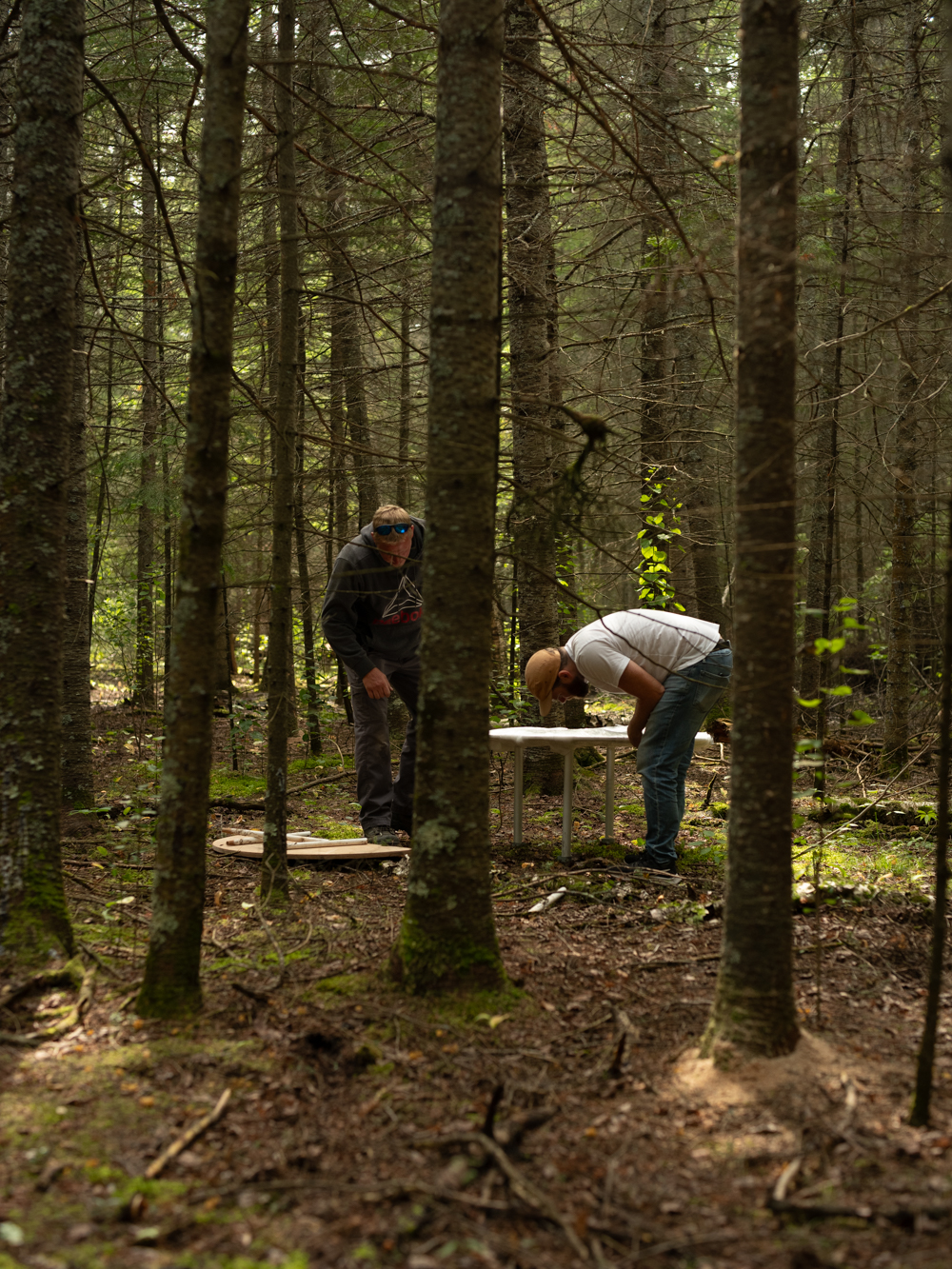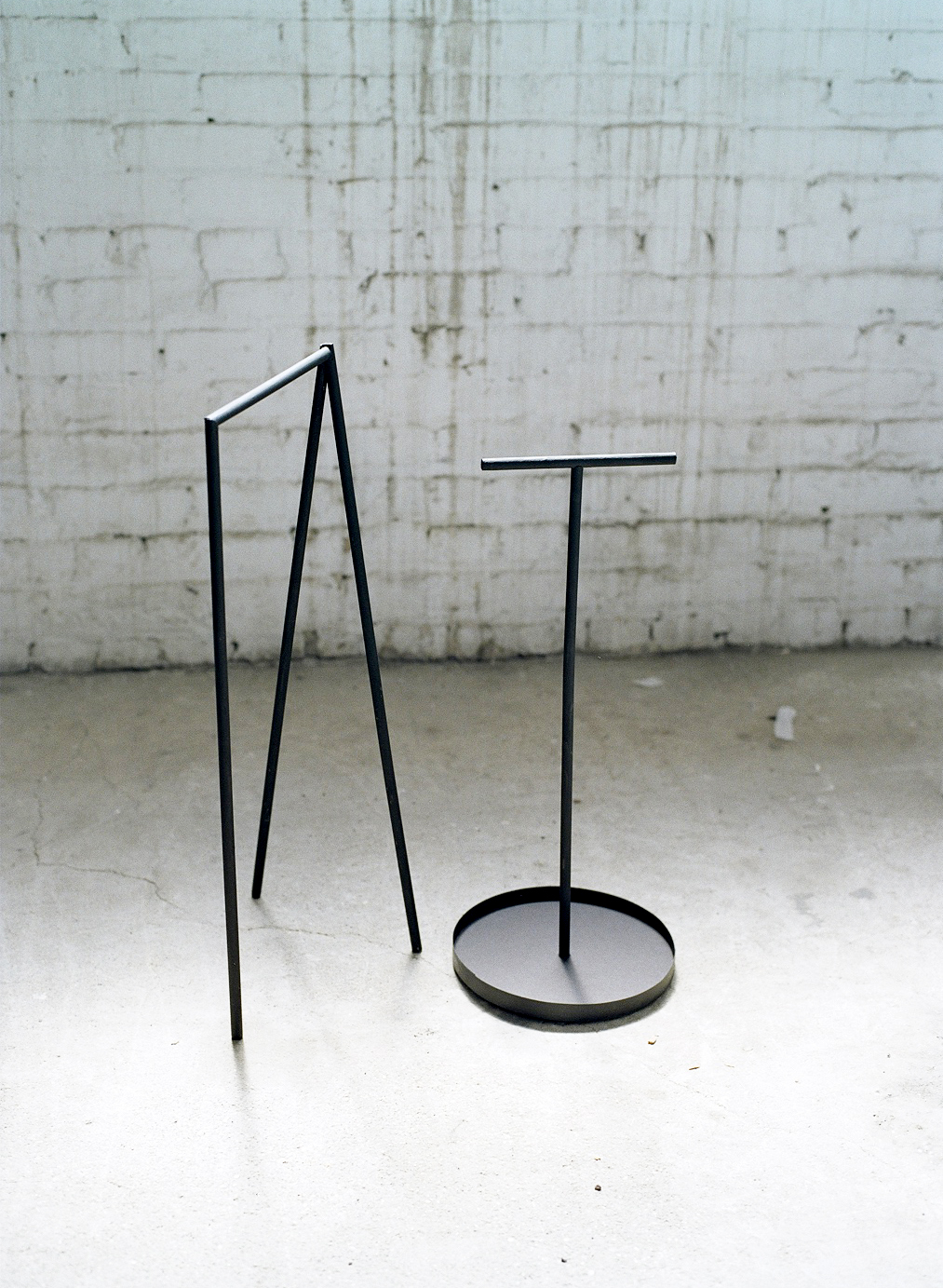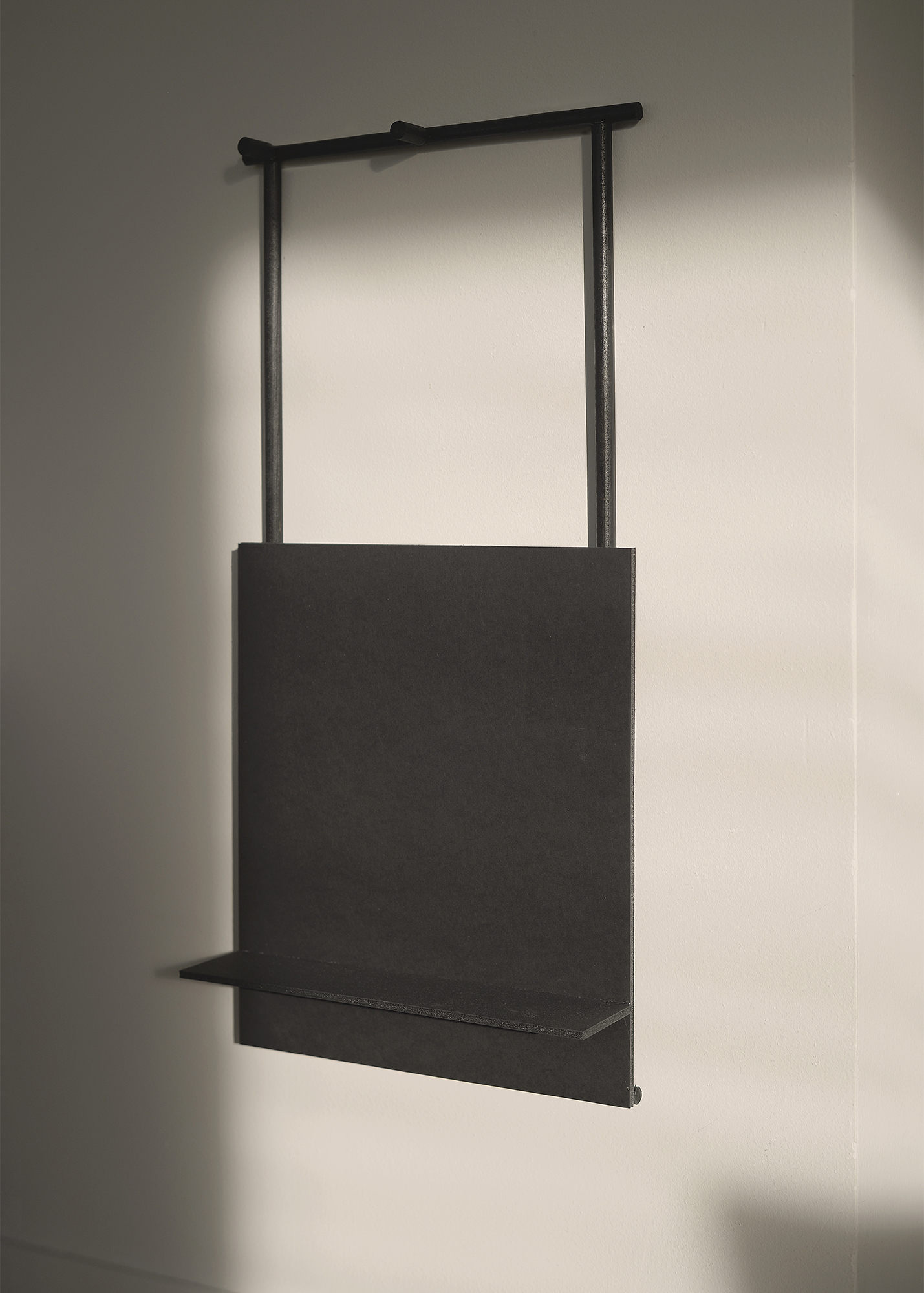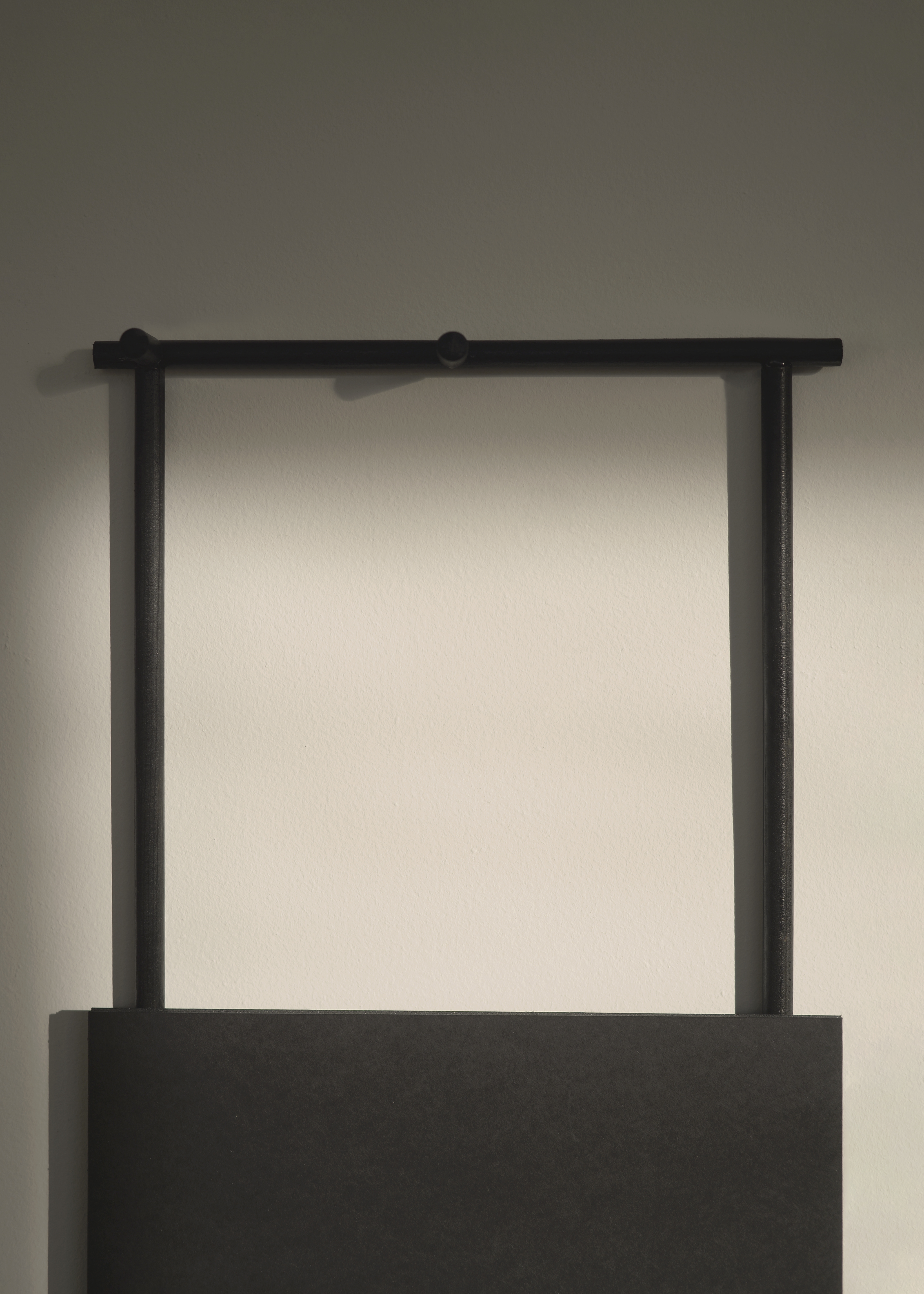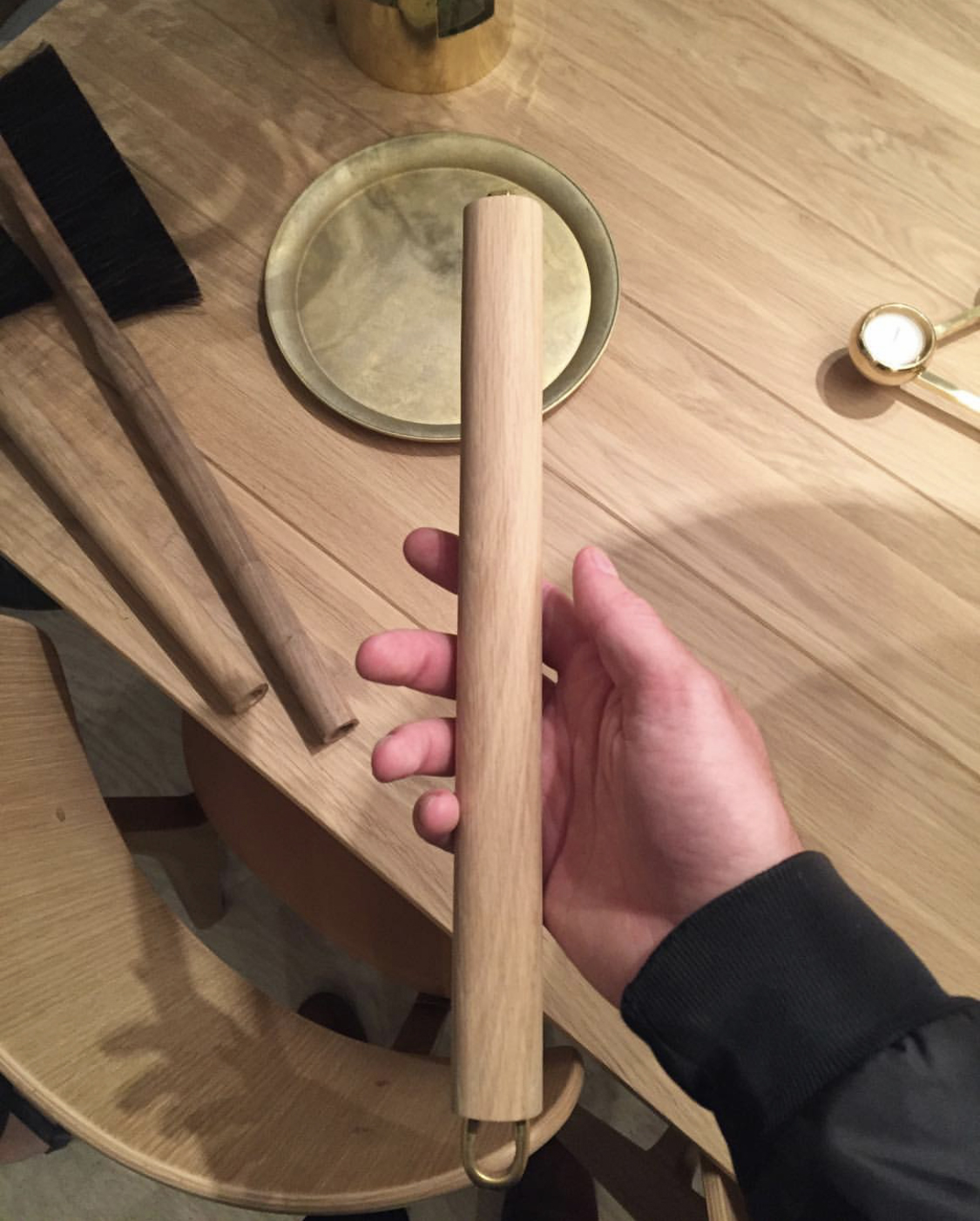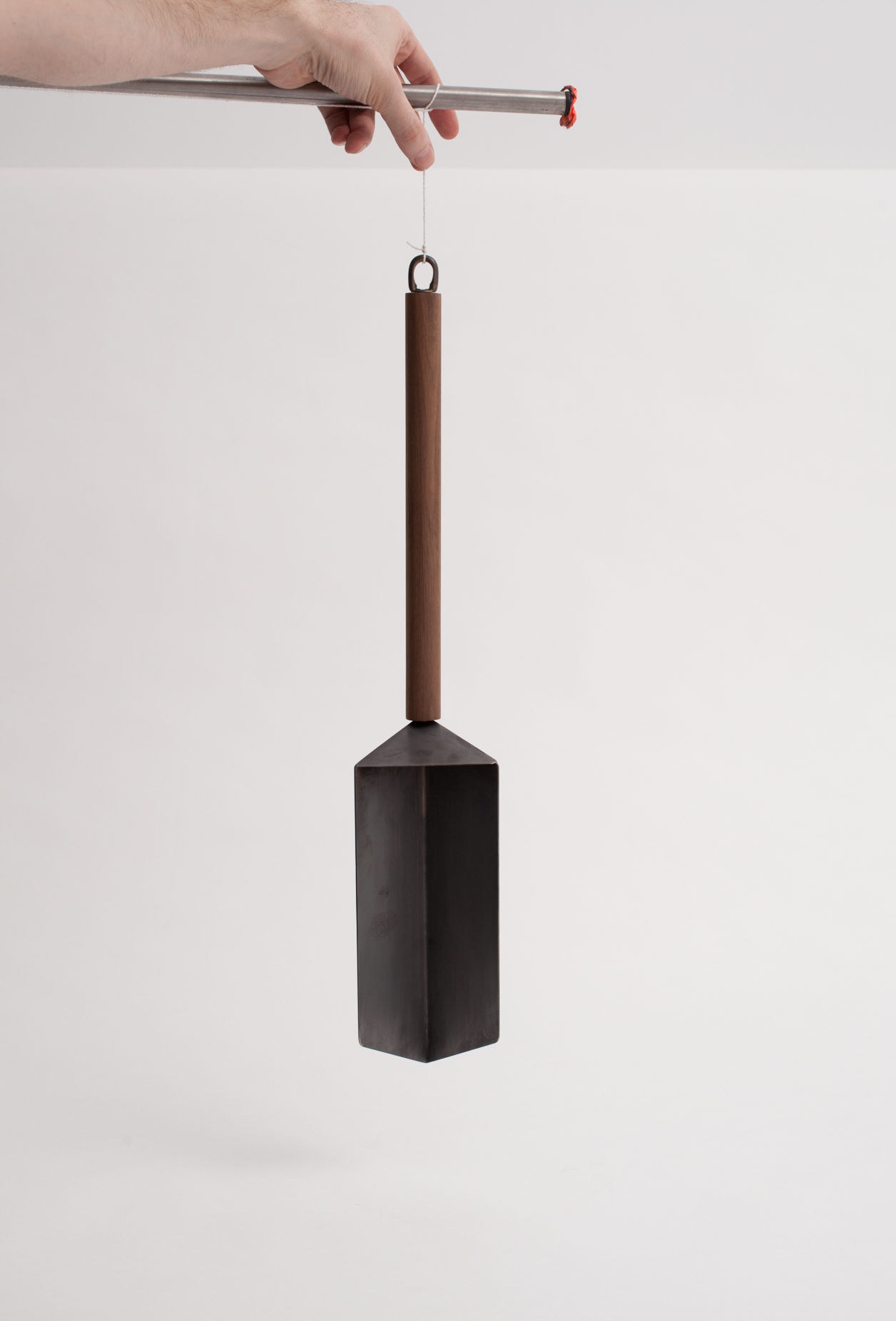















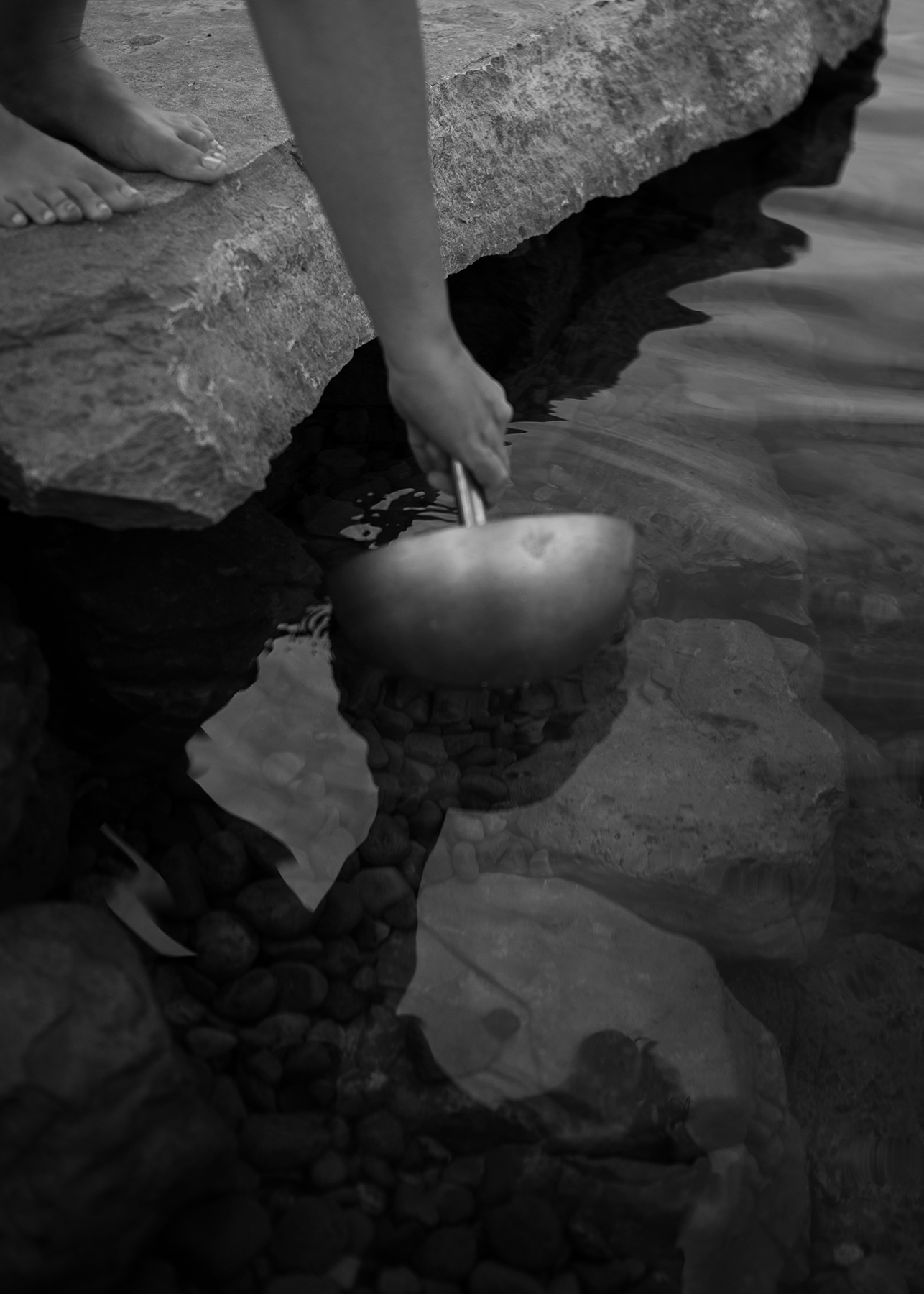


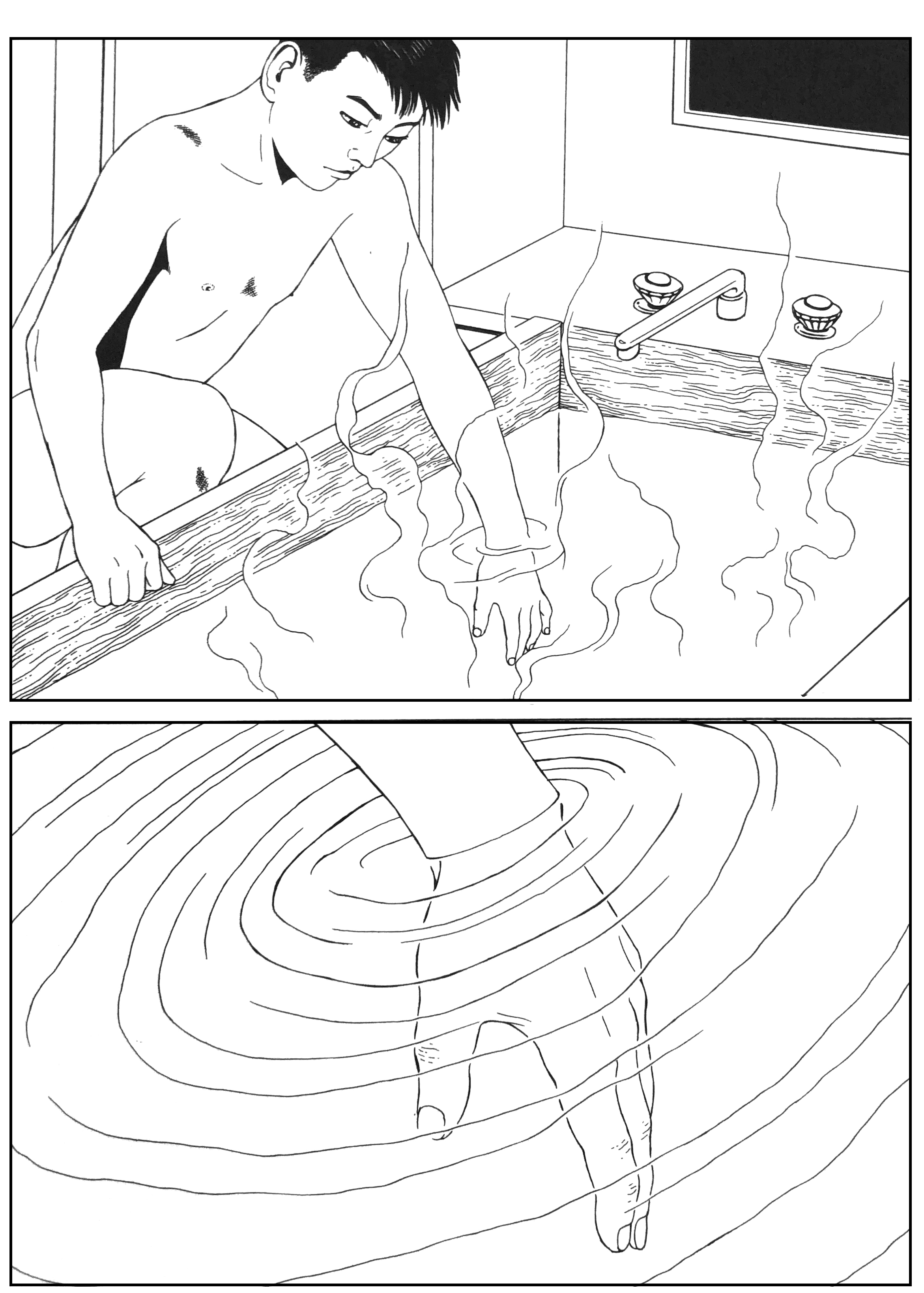














Poker
The poker is the only tool that makes direct contact with fire. The inspiration for the simple form was a tree branch – a tool found in nature, that instinctively lends itself to tending to a fire in the wilderness. The poker, as with a tree branch, makes use of a stem situated perpendicular to the shaft. This sharp poker and opposable thumb is ideal for adjusting logs, and playing with the fire. The leather wrapped handle insulates the hand from heat transferring along the shaft and conceals a magnet embedded within the handle that affixes to the base.



Shovel
The shovel is the greatest departure from what is commonly found in traditional fire tool sets. Dictated by the size of most modern day fire places, the shovel, when paired with the brush, functions laterally sweeping soot and charcoal diagonally into the shovel's spade. The spade of the shovel allows for easy removal from smaller fire places, disposing of dust and charcoal down the spine of the spade. The varied functions were adopted into a geometric diamond-like spade made of blackened brass, mimicking the form of a Japanese chef's knife when connected with the oval walnut handle.

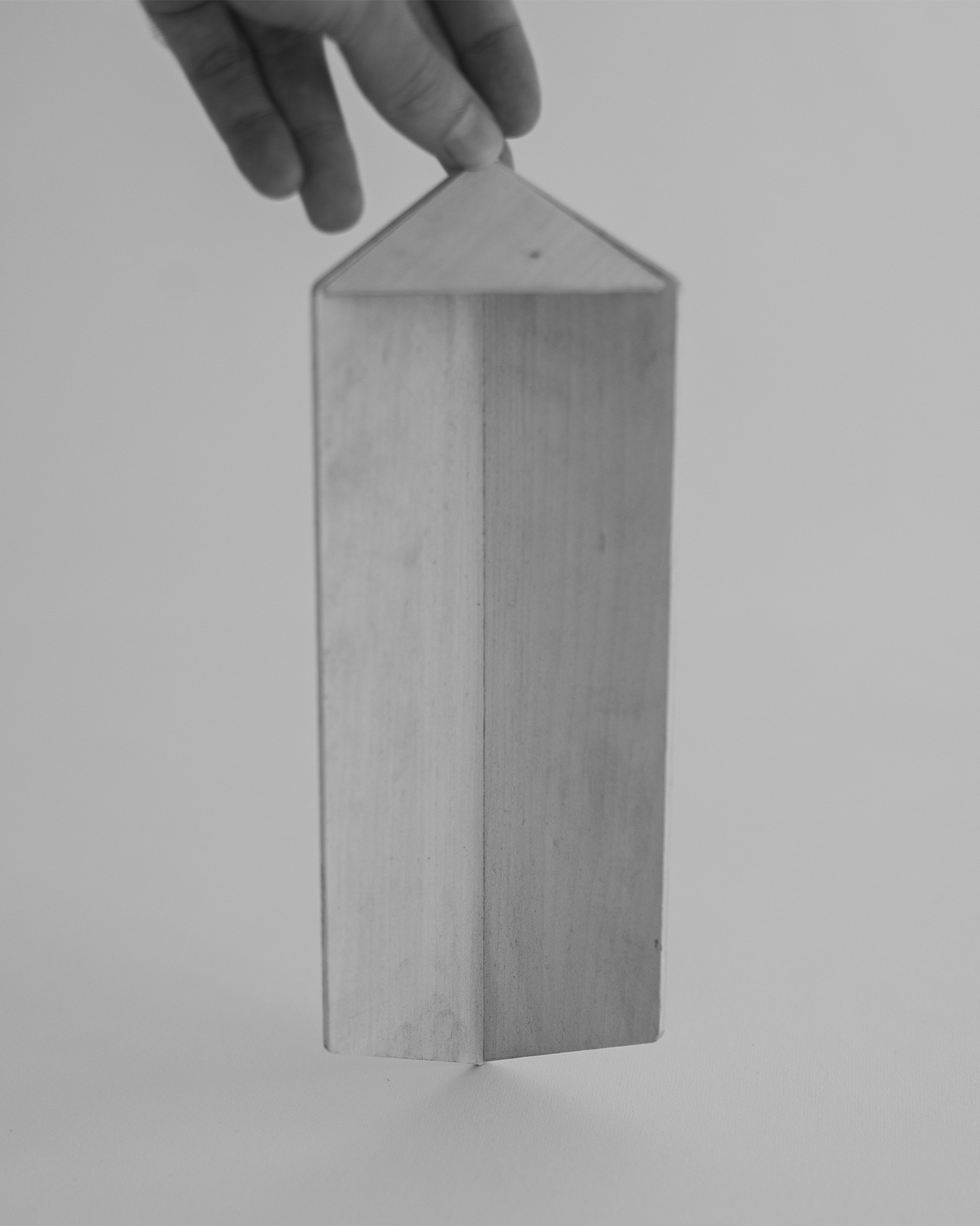
Brush
The brush mirrors the size and geometry of the shovel. The brush and shovel work in tandem for ease of maintenance and cleaning up after an evening beside the fire. Made from black walnut and horse hair, the brush remains an essential part of maintenance after a fire.
Base
The heavy brass base carries each tool along a T-shaped bar above a simple circular basin. The basin floats slightly above the ground, collecting residue left from the tools after use. Its geometric simplicity was inspired by the iron stoves manufactured by Shaker communities in Massachusetts. The Shakers held their iron stoves in high regard and the placement of stoves in a room was carefully considered. Much like these stoves, the base and tool set are objects of functional beauty within a living space. They become an essential component to the ceremony of enjoying the company of a fire on a cold winter's night.
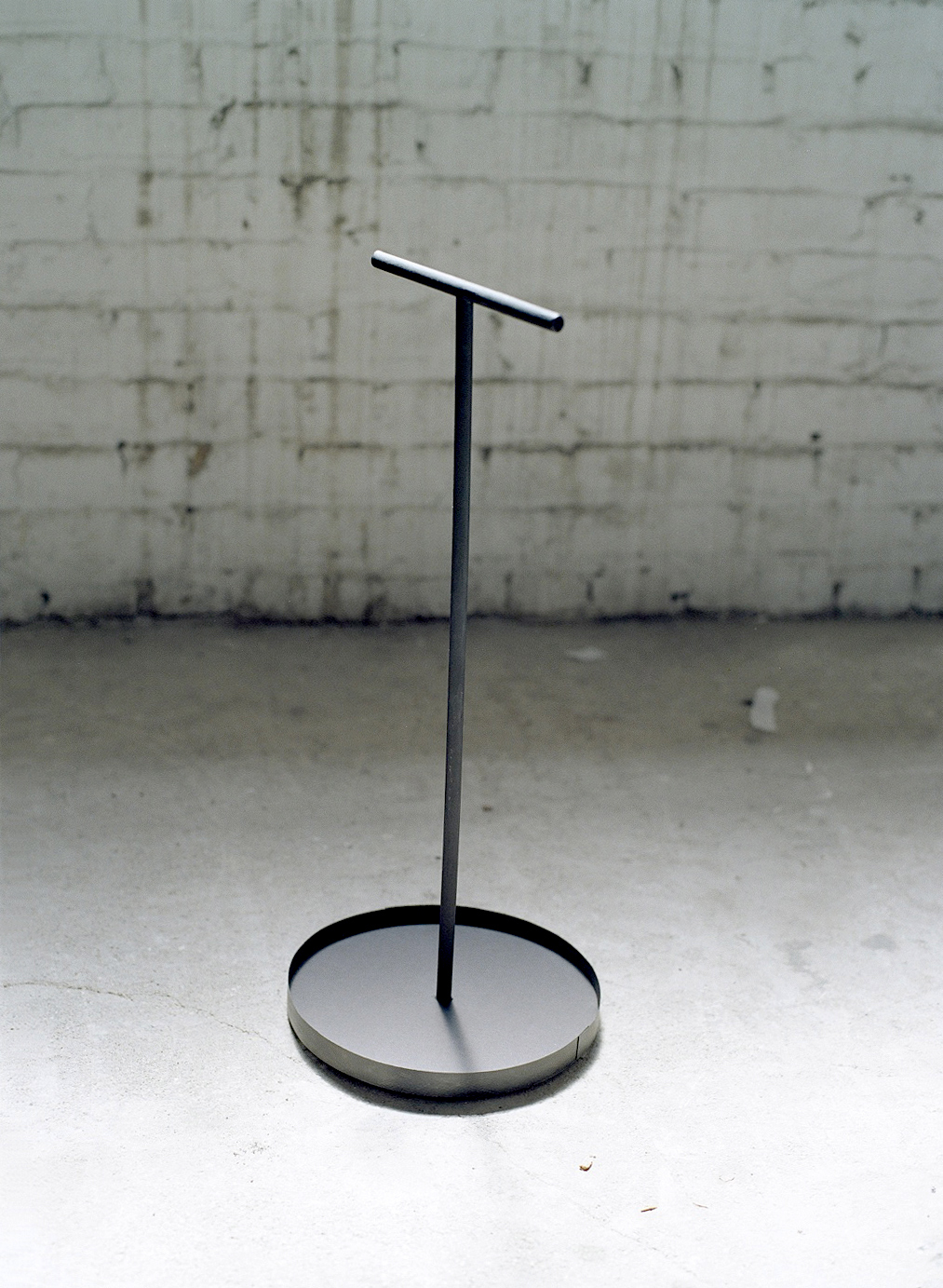

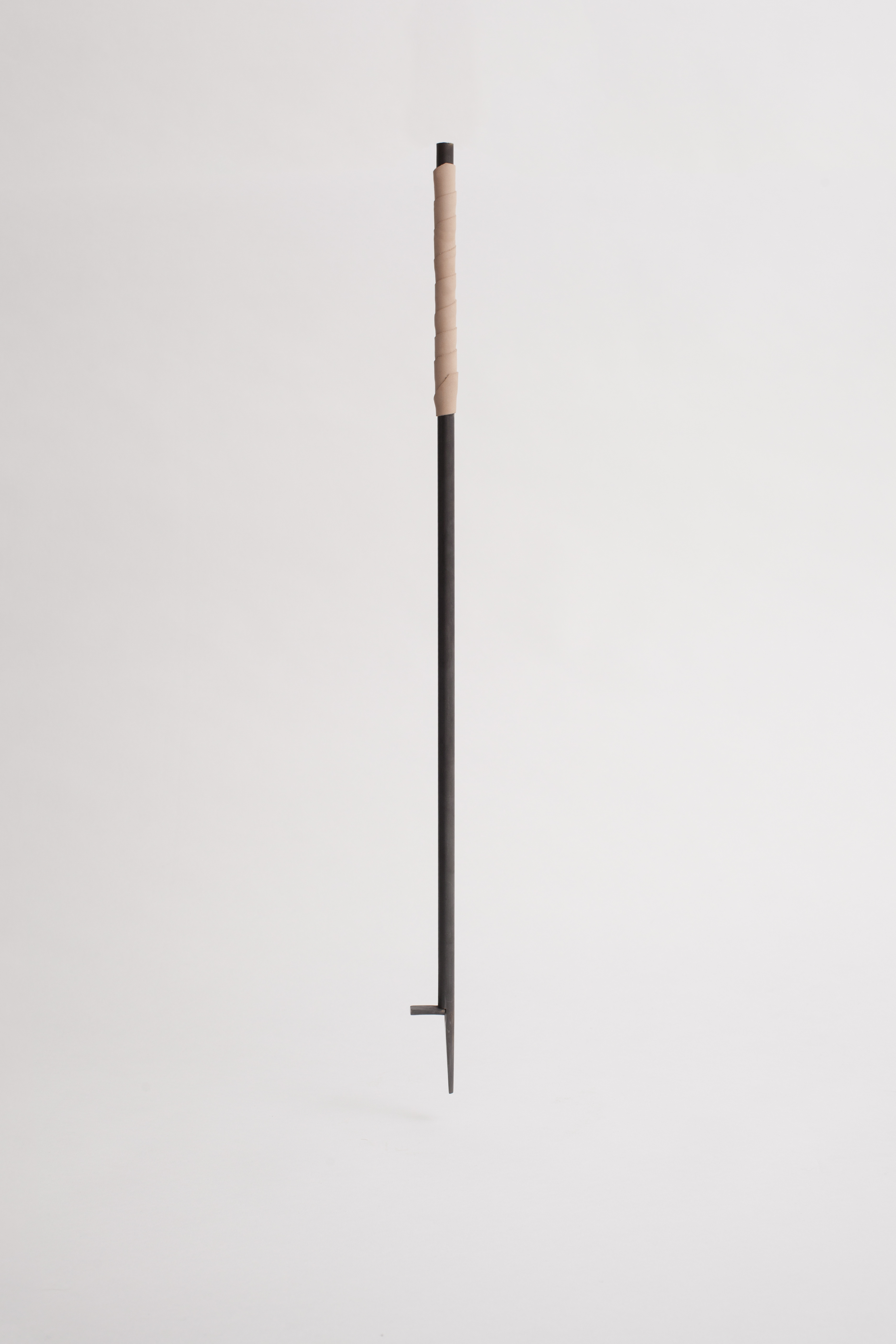




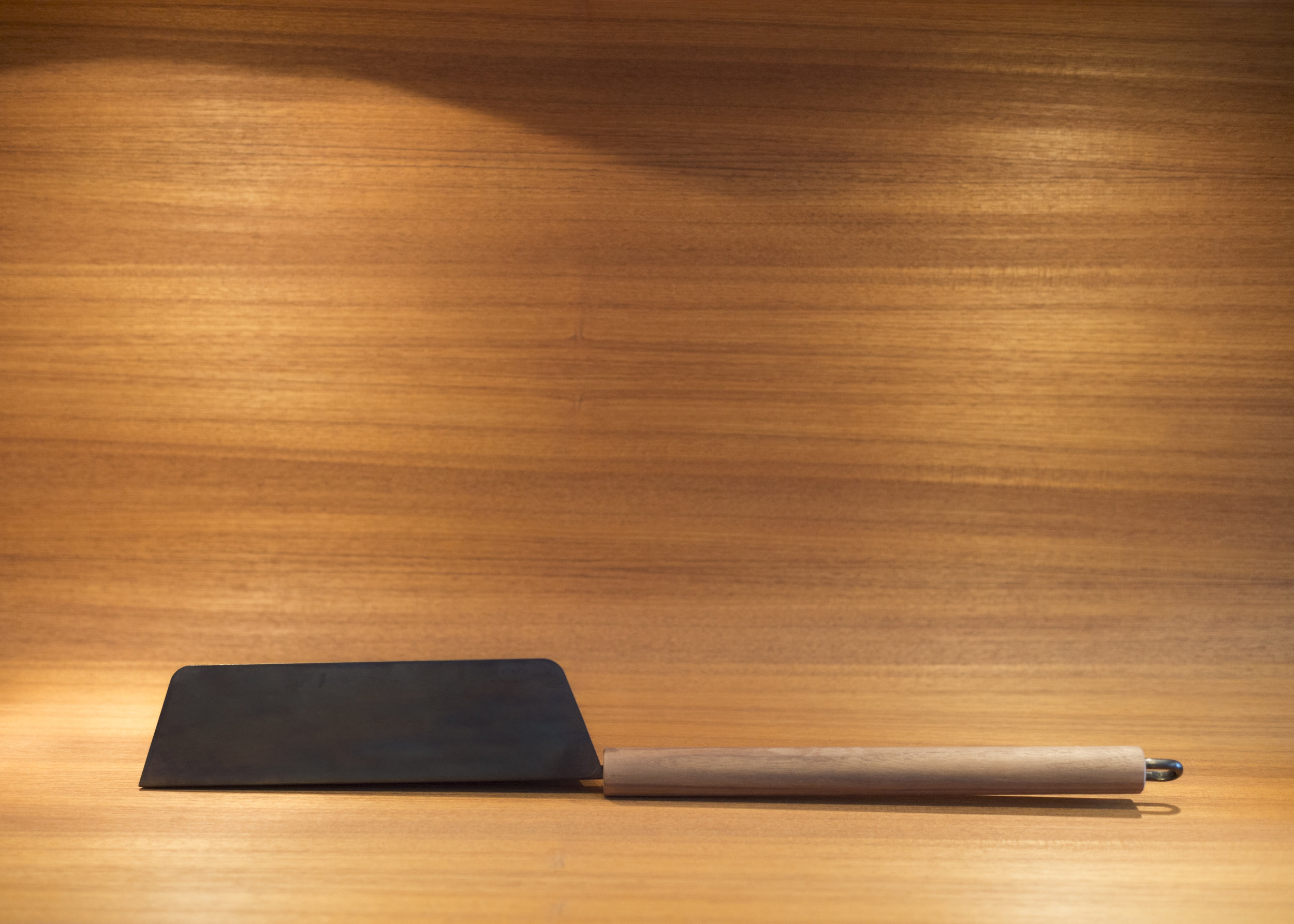



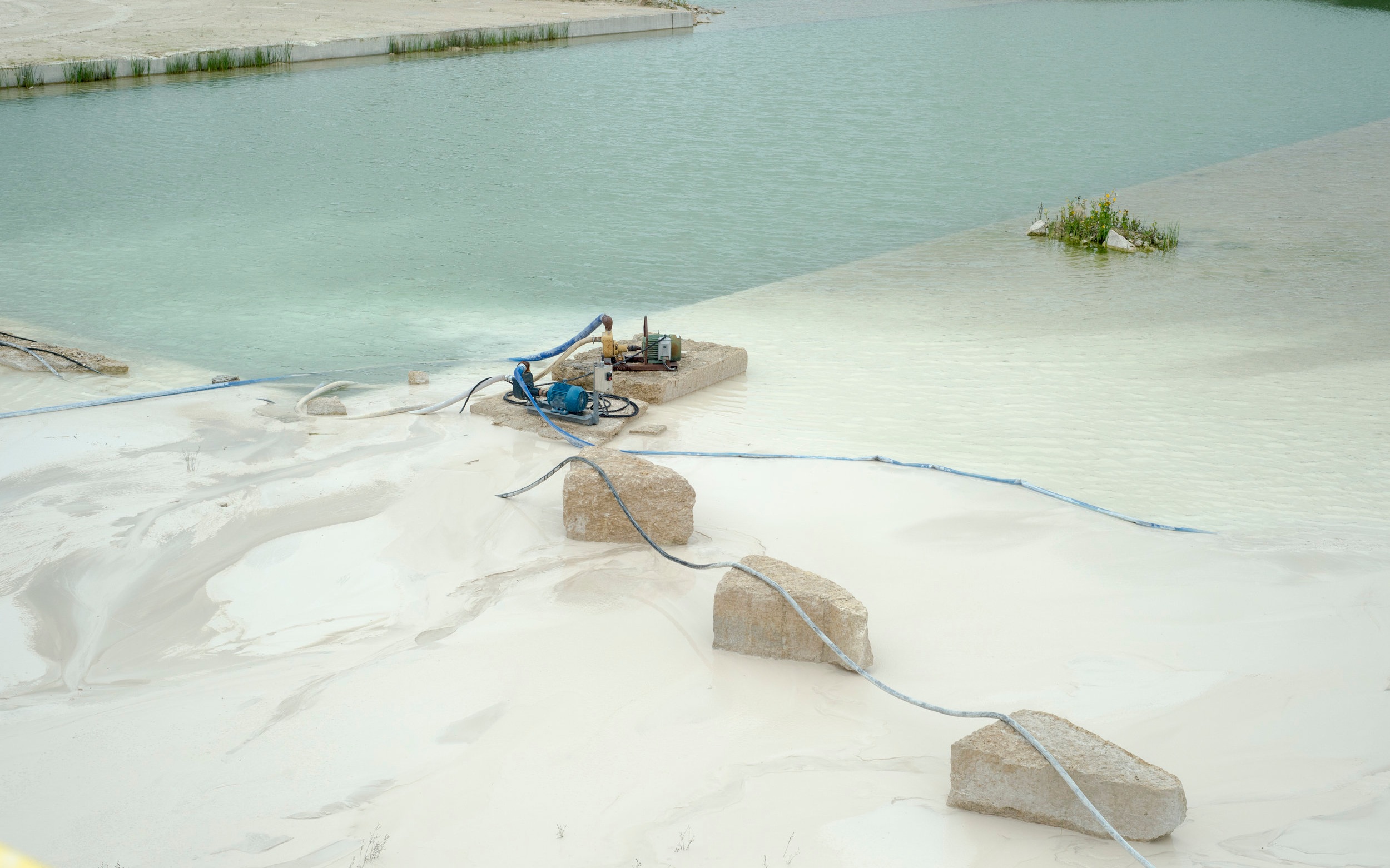


Tyndall stone is a type of limestone that is quarried exclusively in Manitoba, Canada. A porous light stone, Tyndall stone has an intricate grey veining pattern that courses through each slab. The dark veining within the stone(dolomite), is dense and performs a similar function that rebar does for concrete — bonding with the porous light stone to keep the structural integrity of the material. The dolomite portion of Tyndall stone was created by the burrowing of ancient marine creatures within the deposited limestone bed. The evidence of their existence can be found on the face of each slab of Tyndall stone.The light more porous stone that exists between the dolomite deposits is highly reactive to naturally occurring acids. These acids which often interact with the stone through a prolonged period of daily use will leave traces and inform portions of this porous material. As Tyndall stone is only quarried in Manitoba it is common among the Prairie Provinces to see many, if not most, civic structures clad in the stone. Favoured by many architects and builders at the turn of the century for its durability and resilient dynamic beauty.
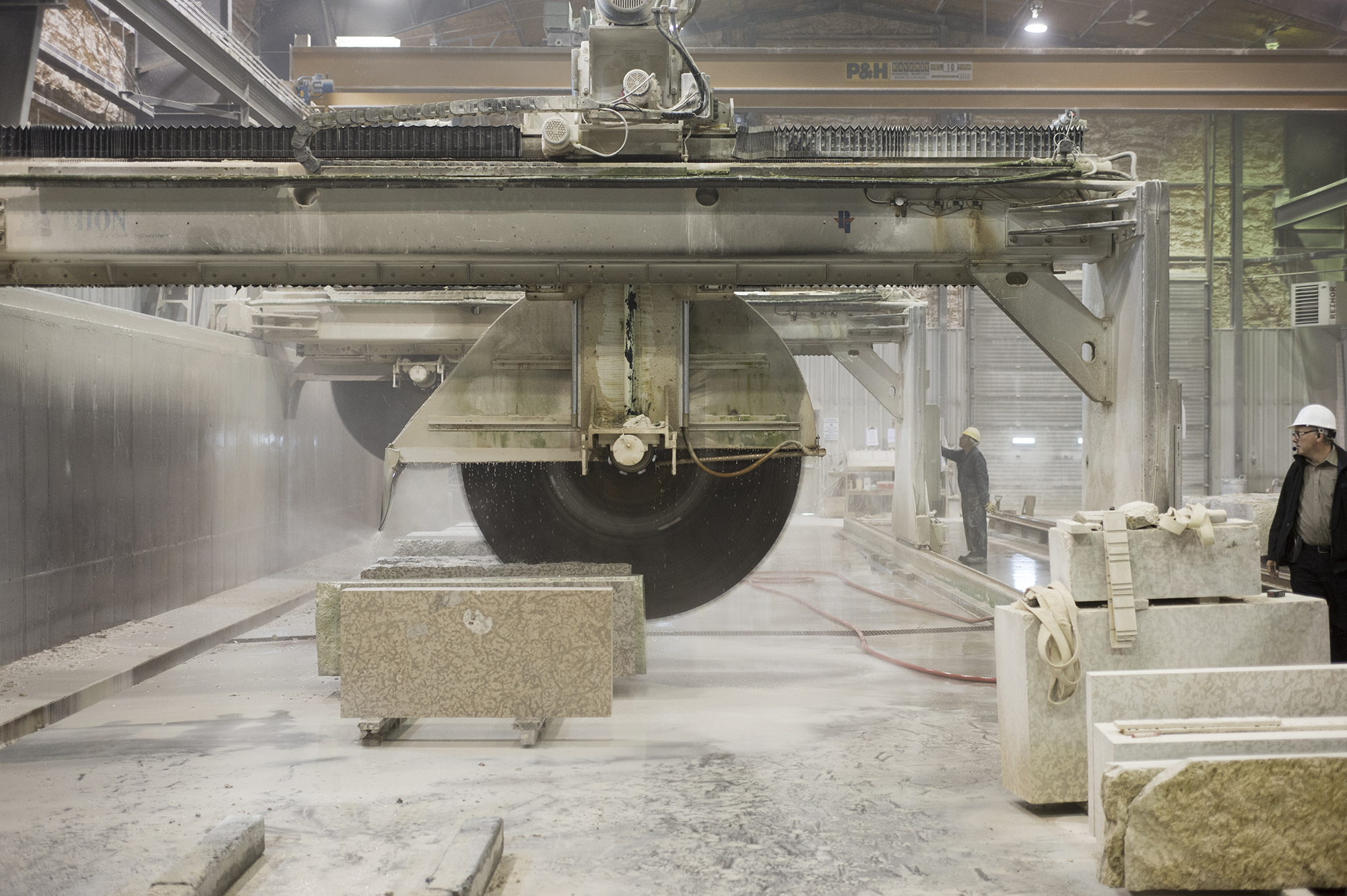
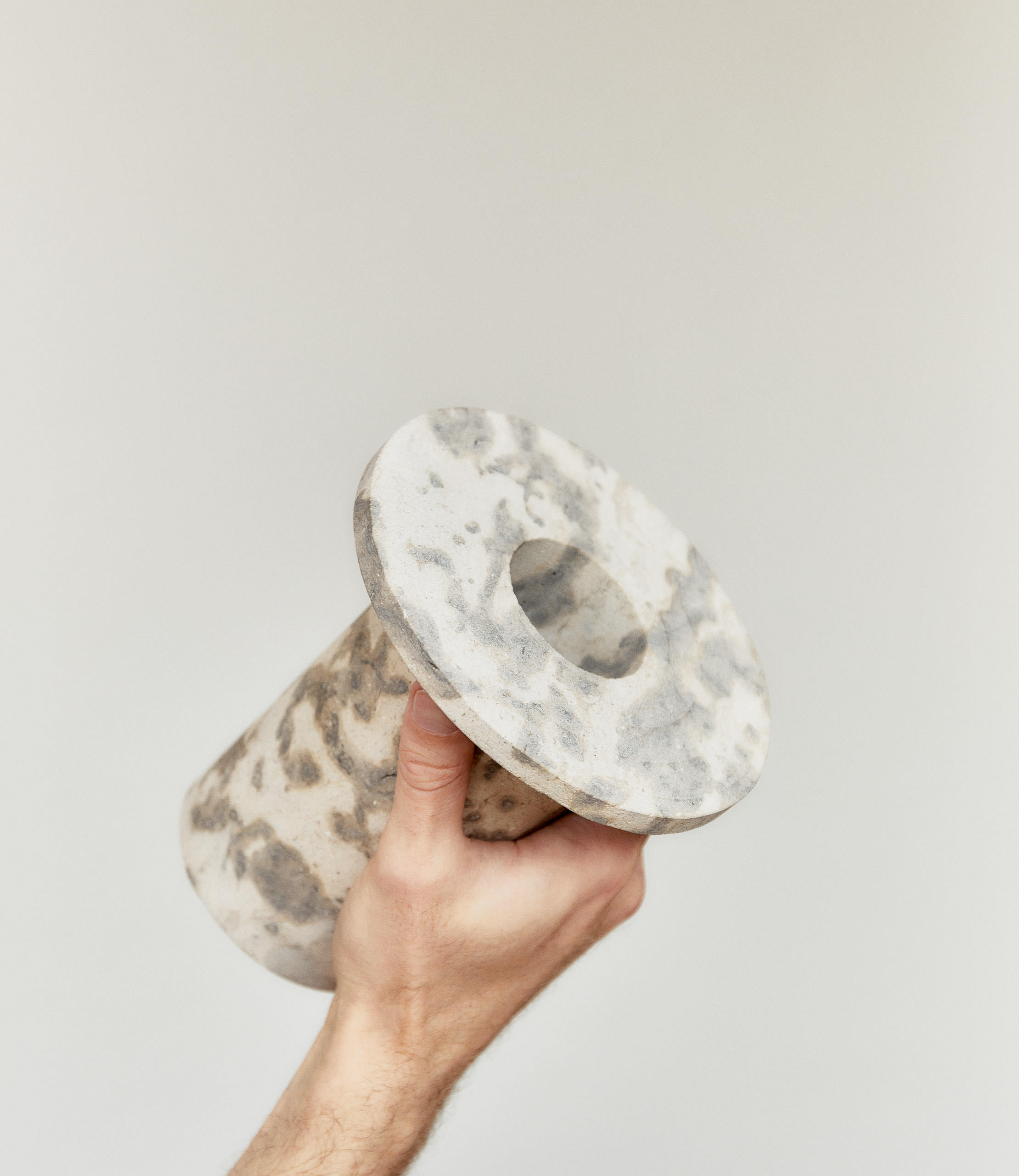
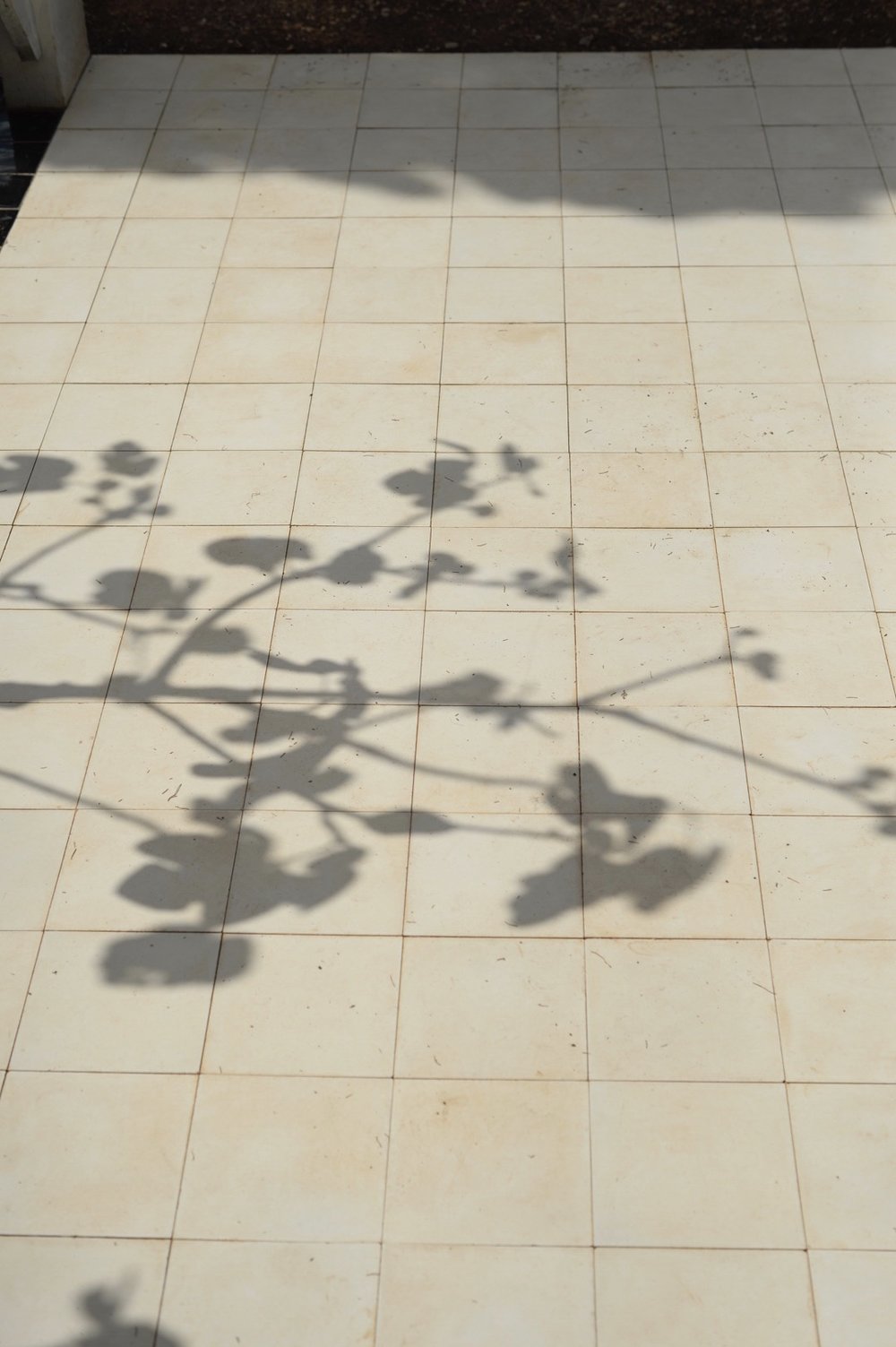





Copyright Thom Fougere Studio 2025
















